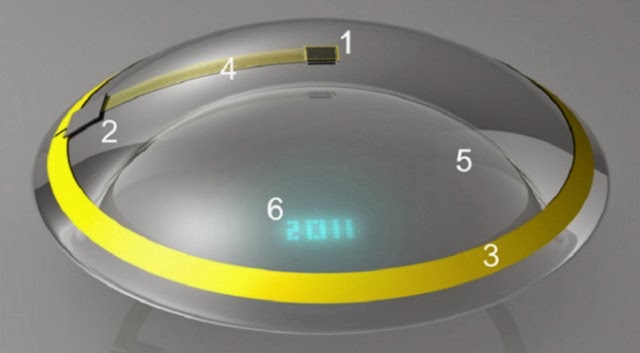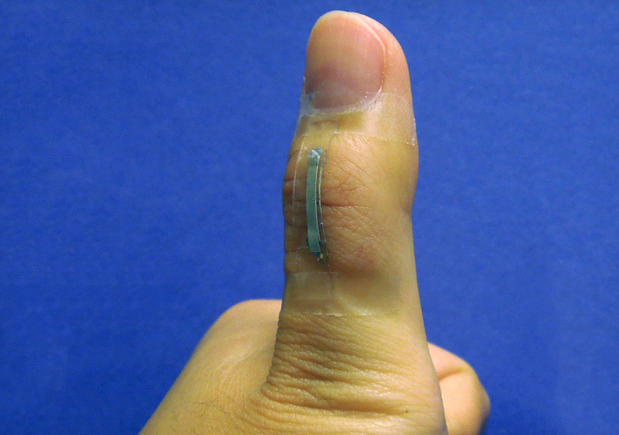Update on the merger of human and machine
 Nicholas West
Nicholas West
Activist Post
Technology seems to be on a runaway course either to free humanity or to enslave us. On one end we see massive continued investment in replacing humans with robots, both economically and socially.
Parallel to this trend, we are seeing advancements in neuroscience being made from global projects like the BRAIN initiative in the U.S. and its counterpart in Europe, the Human Brain Project. These projects seek to decode the human brain and tailor it for “treatments,” as well as to enable the realization of full brain-computer-interface technology. The pace of these developments has increased toward the dizzying, such as a “living” transistor that uses DNA merged with graphene, the advent of quantum computing and nanocomputing, the creation of avatars, DNA nanobots, and a range of neuro applications that are beginning to transform our fundamental relationship with the “real” world.
One respected scientific journal announced earlier this year that the era of cyborgs indeed has begun, as an array of medical applications are merging us with machines and computer systems. This is also happening in tandem with augmented reality applications that have entered the consumer space.
The latest press release states emphatically that we are “On the Frontiers of Cyborg Science.” Once again, only the potential benefits are noted, but the funding for the research cited comes from the U.S. Department of Defense, the National Institutes of Health and the U.S. Air Force. As you read the full chronicle of the developments to date, how do you believe this science will be used? With funding sources such as these, can you imagine some negative consequences? Your thoughts are welcome in the comment section below.
Press release: “On the frontiers of cyborg science”
No longer just fantastical fodder for sci-fi buffs, cyborg technology is bringing us tangible progress toward real-life electronic skin, prosthetics and ultraflexible circuits. Now taking this human-machine concept to an unprecedented level, pioneering scientists are working on the seamless marriage between electronics and brain signaling with the potential to transform our understanding of how the brain works — and how to treat its most devastating diseases.
Their presentation is taking place at the 248th National Meeting & Exposition of the American Chemical Society (ACS), the world’s largest scientific society. The meeting features nearly 12,000 presentations on a wide range of science topics and is being held here through Thursday.
“By focusing on the nanoelectronic connections between cells, we can do things no one has done before,” says Charles M. Lieber, Ph.D. “We’re really going into a new size regime for not only the device that records or stimulates cellular activity, but also for the whole circuit. We can make it really look and behave like smart, soft biological material, and integrate it with cells and cellular networks at the whole-tissue level. This could get around a lot of serious health problems in neurodegenerative diseases in the future.”
These disorders, such as Parkinson’s, that involve malfunctioning nerve cells can lead to difficulty with the most mundane and essential movements that most of us take for granted: walking, talking, eating and swallowing.
Scientists are working furiously to get to the bottom of neurological disorders. But they involve the body’s most complex organ — the brain — which is largely inaccessible to detailed, real-time scrutiny. This inability to see what’s happening in the body’s command center hinders the development of effective treatments for diseases that stem from it.
By using nanoelectronics, it could become possible for scientists to peer for the first time inside cells, see what’s going wrong in real time and ideally set them on a functional path again.
 For the past several years, Lieber has been working to dramatically shrink cyborg science to a level that’s thousands of times smaller and more flexible than other bioelectronic research efforts. His team has made ultrathin nanowires that can monitor and influence what goes on inside cells. Using these wires, they have built ultraflexible, 3-D mesh scaffolding with hundreds of addressable electronic units, and they have grown living tissue on it. They have also developed the tiniest electronic probe ever that can record even the fastest signaling between cells.
For the past several years, Lieber has been working to dramatically shrink cyborg science to a level that’s thousands of times smaller and more flexible than other bioelectronic research efforts. His team has made ultrathin nanowires that can monitor and influence what goes on inside cells. Using these wires, they have built ultraflexible, 3-D mesh scaffolding with hundreds of addressable electronic units, and they have grown living tissue on it. They have also developed the tiniest electronic probe ever that can record even the fastest signaling between cells.
Rapid-fire cell signaling controls all of the body’s movements, including breathing and swallowing, which are affected in some neurodegenerative diseases. And it’s at this level where the promise of Lieber’s most recent work enters the picture.
In one of the lab’s latest directions, Lieber’s team is figuring out how to inject their tiny, ultraflexible electronics into the brain and allow them to become fully integrated with the existing biological web of neurons. They’re currently in the early stages of the project and are working with rat models.
“It’s hard to say where this work will take us,” he says. “But in the end, I believe our unique approach will take us on a path to do something really revolutionary.”
Lieber acknowledges funding from the U.S. Department of Defense, the National Institutes of Health and the U.S. Air Force.
_________________________________________________________________________
FDA Approves World’s First Bionic Eye Transplant
Full cyborg transformation has been given a green light by the FDA, and now researchers have successfully transplanted the world’s first bionic eye.
Surgeons at the University of Michigan Health System have made the first officially FDA-approved “bionic eye” transplants, allowing patients with a degenerative eye disease to make out light and shapes. The Michigan Daily reports that on January 16th and 22nd, two surgeons successfully implanted the Argus II artificial retina, which is composed of a sheet of electrodes fixed to the eye. The implant is paired with a pair of camera-equipped glasses and a processor that captures video from the glasses. That video is then sent as a series of pulses to the electrodes, stimulating the patient’s remaining nerve fibers. (Source)
While the device does not offer any type of superhuman enhancement – it in fact only offers rudimentary sight – researchers are heralding this as a major step in a new direction.
This announcement is certainly among the benign applications of this technology, but it is nonetheless an important reminder that we should consider if any limits need to be put on future applications like some of those discussed below. As professor and developer of this bionic system, Thiran Jayasundera, states:
This is already the Argus II . . . In time there will be more development of these types of devices. (Source)
__________________________________________________________________________
Google to Introduce Smart Contact Lenses
The Google Glass concept is poised to transform into a much less invasive apparatus: Smart contact lenses. As Extreme Tech reports, it is beginning with a medical application, but has obvious crossover potential:
The first smart contact lens, aimed at diabetics, takes a glucose level reading every second from the tears that wash over your eye when you blink, and transmits that data wirelessly to a nearby device. Google doesn’t say what device, but presumably a smartphone or Google Glass. Yes, if Google X has its way, we will soon all look like cyborgs, our bodies becoming interconnected networks of implants and augmentations. (source) [emphasis added]
The mention of cyborgs is not mere hyperbole. The technology already exists to apply a range of applications directly into contact lenses. A transparent graphene display built with the ability to be flexible ushers in the contact lens computer. It’s being developed by researchers in Korea:
The researchers were able to build miniature inorganic LEDs by connecting the graphene sheets together with silver nanowires into a hybrid structure. The flexible silver nanowires enabled the hybrid strucuture to maintain its high conductivity even when bent. The most important factor for using the hybrid graphene in a contact lens-based computer is its high transparency. (Source)
The silver nanowire sensors promise a multitude of wearable applications:
A clear, bandage-like sensor could eventually make everything from fabrics to our fingers smart. Dr. Yong Zhu and a team of North Carolina State University researchers created an ultra-thin, flexible sensor that could be used in clothing, on the body, any in other ordinary objects to track things like strain, pressure, human touch, and bioelectronic signals. (Source)
Amazingly, the core technology for smart contact lenses has been around since 2008. As Gizmag reported at the time, it was a stunning development that very well could have marked “the beginning of the Computer Human Interface of the future.”
It’s not often in this era of rampant technological innovation that a fundamentally new concept surfaces – with almost no limitations to what can be achieved with the myriad new technologies coming to market over the last few years, fundamentally new ideas of this magnitude are becoming increasingly rare, much less technologies with groundbreaking societal implications. Such a technology emerged this week when it was announced that engineers at the University of Washington have used microscopic scale manufacturing techniques to combine a flexible contact lens with an imprinted electronic circuit and lights.
As they also noted, the amount of investment into this area indicates how close to full reality the tech sector believes this to be:
Microvision, 3M, Texas Instruments, Explay, Neochroma, Digislide, Light Blue Optics and from research labs such as the Fraunhofer Institute for Photonic Microsystems. Though the microprojection area promises the ability to project a large screen on any flat surface, we have yet to see commercially available products and the technology won’t suit everyone, partially because they’re still not quite small enough, and partially because of privacy issues – projecting delicate company information onto an airport terminal wall, for example, might not be a good idea. (Source)
Enter Google, which is already dealing with the privacy and legal issues of Google Glass. As we have seen with their investments in robotics and Smart Home technology, they are adept at making science fiction a palatable next-gen essential item by validating formerly radical concepts.
By combining the personal safety of health monitoring with the coolness of bionic zoom vision, can it really be resisted?
_____________________________________________________________________________
The Era of Cyborgs Has Begun
Until now, much of the dystopian aspect of these developments has been relegated to the alternative media; while the corporate, military, and governmental interests behind much of this tech continue to promote only the promise of a Utopia that will be free of disease, impairment, and death. But in order for this to happen, we must fully merge with computational and machine systems.
Now a leading mainstream scientific journal has announced that this is already happening, which indicates that the era of cyborgs has indeed begun.
The German science journal Applied Chemistry might not sit on the coffee table of the average citizen, but it is one of the most highly regarded in the world among those in the field, and is now in its 125th year of existence.
In their latest review, “The Chemistry of Cyborgs – Interfacing Technical Devices with Organisms” researchers from Karlsruhe Institute of Technology (KIT) first point to some of the electronic health implants that we already take for granted as being a merger of man and machine, such as pacemakers and hearing or retina implants.
However, it is the rise of “smart” materials that can instantly change based on body conditions and integrate into tissues that marks a future of computational analysis and restructuring of the human body.
For successful tissue integration and the prevention of inflammation reactions, special surface coatings were developed also by the KIT under e.g. the multidisciplinary Helmholtz program “BioInterfaces”.
Most people embrace new developments that can assist with longevity and quality of life, and even the reversal of genetic conditions. But it is the human brain that poses the greatest ethical challenge; in this case, the brain-machine-interface (BMI).
BMI are often considered data suppliers. However, they can also be used to feed signals into the brain, which is a highly controversial issue from the ethical point of view. “Implanted BMI that feed signals into nerves, muscles or directly into the brain are already used on a routine basis, e.g. in cardiac pacemakers or implants for deep brain stimulation,” Professor Christof M. Niemeyer, KIT, explains. “But these signals are neither planned to be used nor suited to control the entire organism – brains of most living organisms are far too complex.” (emphasis added)
As the researchers also note, neuroprostheses are the foundation of a true cyborg, where robotic systems combine with a brain-machine-interface to control the external with thought alone. You can see some examples of this mind-controlled reality here.
While, again, many would embrace the notion of effectively replacing lost limbs, or allowing the paralyzed to walk again, the deaf to hear, and the blind to see; this technology is becoming increasingly elective, as well as forming a merger with the gadgets of our modern-day existence. And it’s all being done with very little two-way dialogue – science conducts the experiments, gets results, after which it is often dispersed for military use, then trickled down into consumer applications.
Moreover, as highlighted in the quote above, the two-way information transfer is troubling beyond the stated helpful applications. This is exactly what led a DARPA project researcher to blow the whistle on an Arizona State University project involving Transcranial Magnetic Stimulation and the efforts to reproduce it through narrative. This can be done from a distance and is anything but elective.
Ethical concerns are unfortunately the last to arrive. It is for this reason that with very little fanfare we are becoming the cyborgs of science fiction. All that’s left is to decide how far we wish to continue down this path; the fork in the road is already upon us.
Recently from Nicholas West:
- U.S. Government Invests in Robot Personal Trainers for Children
- Japan Changes Constitution to Join Global Drone Arms Race
- U.S. Military Seeks To Brain Scan Troops For “Signs of Potential Betrayal”
Updated 8/10/2014




DARPA and the DOD are not here to improve anything, this is all about controlling you. The transhumanist agenda is designed to sell you on the idea of accepting a brain chip, its ready to go, now all they need is your consent. Once you agree, you will no longer have the ability to perceive of yourself as a unique individual and your thoughts will not be your own. Remember the UN definition of “peace” is the absence of all opposition. Hence, the chip.
here is more–
archangelmichaelsword.blogspot.com
I’m a TI and already a Cyborg. We are a legion and we have no right to complain. Have you ever heard of us ?…
And yet when DNA is damaged by say aspartame – happens all the time – you can repair your DNA by meditation. Hmmm
Can you say, epigenetics? Did you read the Stanford Stem Cell Geneticist who insists that only 2% of your health expression is genetic. He erroneously states that the rest (implied all) is from subconscious attitude. . .
I’d say Genetics is a fail as master control. The Human Genome project knew before completion that there is not enough information in DNA to account for all that has been ascribed to genetics.
There are literally cases in which DNA “evidence” was thrown out because it is inaccurate. Much of the myths of genetics are extensions of Eugenics, and with the same goal – to convince people that they are not free, just little machines. That there are rich, powerful people with better genetics than you have, and they should run it all. Palpably untrue of course (the royalty of Europe and their rampant hemophilia, etc)
A good primer to read on the politicalization and inaccuracies in genetic propaganda would be “EXPLODING THE GENE MYTH”.
Great article, please, join our movement to introduce legislation in UK called The Bodily Integrity Act http://www.antichips.com encourage the parliamentary debate and enshrine it in law in order to protect the vulnerable adults and children from being micro-chipped forcibly. Children should not be chipped even if their parents are in favour because minors cannot make a choice. Alzheimer’s patients should not be micro-chipped because they are not corpus mentis any more. If it’s their decision at a very early stage they can write a ‘living will’ and choose the memory implant later or immediately.
Micro-chipping is a ploy to control humans and turn them into mind slaves. They would not know what date it is unless the software provider downloads today’s date into their ‘system’ This is worse than the old fashioned slavery. At least, they had a chance to think for themselves and be indignant about it.